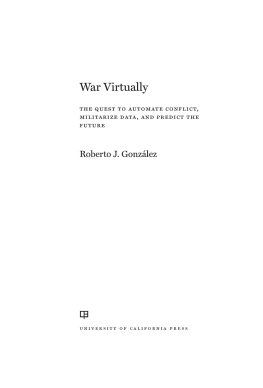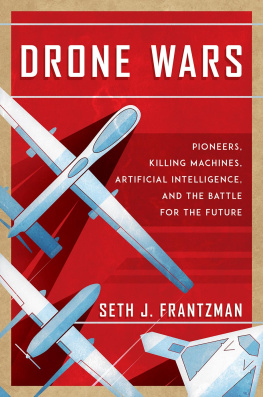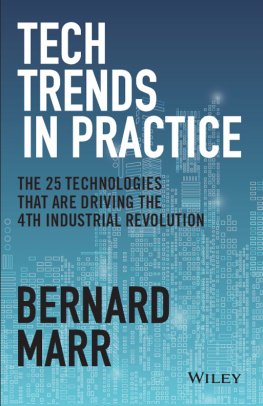MODERN WARFARE, INTELLIGENCE AND DETERRENCE
OTHER ECONOMIST BOOKS
Guide to Analysing Companies
Guide to Business Modelling
Guide to Business Planning
Guide to Economic Indicators
Guide to the European Union
Guide to Financial Management
Guide to Financial Markets
Guide to Hedge Funds
Guide to Investment Strategy
Guide to Management Ideas and Gurus
Guide to Managing Growth
Guide to Organisation Design
Guide to Project Management
Guide to Supply Chain Management
Numbers Guide
Style Guide
Book of Isms
Book of Obituaries
Brands and Branding
Business Consulting
Business Strategy
Buying Professional Services
The City
Coaching and Mentoring
Doing Business in China
Economics
Emerging Markets
Mapping the Markets
Marketing
Organisation Culture
Successful Strategy Execution
The World of Business
Directors: an AZ Guide
Economics: an AZ Guide
Investment: an AZ Guide
Negotiation: an AZ Guide
Pocket World in Figures
MODERN WARFARE, INTELLIGENCE AND DETERRENCE
The technologies that are transforming them
Edited by Benjamin Sutherland


Modern Warfare, Intelligence and Deterrence
The technologies that are transforming them
Edited by Benjamin Sutherland

PublicAffairs
THE ECONOMIST IN ASSOCIATION WITH
PROFILE BOOKS LTD and PUBLICAFFAIRS
Copyright 2011 by The Economist Newspaper Ltd.
First published in 2011 by Profile Books Ltd. in Great Britain.
Published in 2014 in the United States by PublicAffairs, a Member of the Perseus Books Group
All rights reserved.
publicaffairsbooks.com
No part of this book may be reproduced, stored in or introduced into a retrieval system, or transmitted, in any form or by any means (electronic, mechanical, photocopying, recording or otherwise), without the prior written permission of both the copyright owner and the publisher of this book, except in the case of brief quotations embodied in critical articles and reviews. For information, address PublicAffairs, 250 West 57th Street, 15th Floor, New York, NY 10107.
The greatest care has been taken in compiling this book. However, no responsibility can be accepted by the publishers or compilers for the accuracy of the information presented.Where opinion is expressed it is that of the author and does not necessarily coincide with the editorial views of The Economist Newspaper.
While every effort has been made to contact copyright-holders of material produced or cited in this book, in the case of those it has not been possible to contact successfully, the author and publishers will be glad to make amendments in further editions.
PublicAffairs books are available at special discounts for bulk purchases in the U.S. by corporations, institutions, and other organizations. For more information, please contact the Special Markets Department at the Perseus Books Group, 2300 Chestnut Street, Suite 200, Philadelphia, PA 19103, call (800) 810-4145, ext. 5000, or e-mail special.markets@perseusbooks.com.
Library of Congress Control Number: 2014932063
ISBN 978-1-61039-512-0 (EB)
First Edition
Contents
PART 5 The road ahead
Contributors
Bruce Clark covers law, ethics, religion and international institutions at The Economist. He contributed articles to .
Diana Geddes is The Economists southern Africa correspondent. She contributed an article to .
Alison Goddard is The Economists education correspondent. She contributed articles to .
Anton La Guardia is bureau chief of The Economists Brussels office. He contributed articles to .
Natasha Loder is a science and technology correspondent at The Economist. She contributed articles to .
Edward Lucas edits The Economists International section. He contributed articles to .
Paul Markillie is The Economists innovation editor. He contributed articles to .
James Miles is a China correspondent at The Economist. He contributed articles to .
Oliver Morton is The Economists energy and environment editor. He contributed an article to .
.
Tom Standage is The Economists digital editor. He contributed articles to .
Other contributors (and the chapter to which they contributed articles) are Stephen Budiansky ().
This book was edited by Benjamin Sutherland; he also wrote the introductions and contributed articles to .
Introduction
IN THE LARGEST AIR BATTLE of the jet age, beginning June 9th 1982 over the Beqaa Valley in eastern Lebanon, Israeli warplanes destroyed all of Syrias 19 anti-aircraft batteries in the area and shot down 82 Syrian fighter jets. The Israeli air force lost just a single aircraft in the conflict, known as the Lebanon war. It was a real turkey shoot, says Martin van Creveld, an Israeli military historian. Syria fought with Soviet fighter jets, anti-aircraft guns and radar systems. Israel fought with mostly American and Israeli warplanes and kit.
The rout of Syrias air force with a concert of Western military technologies has had far-reaching consequences, says David Ivry, head of the Israeli air force during the war. Syria and other rivals of Israel lost the illusion that they could win a big war against Israel, says Mr Ivry, also a former ambassador to the United States and now head of the Israeli division of Boeing, an American defence giant. Syria scaled back its ambitions, largely limiting its goal to gaining control of the Israeli-occupied parts of the Golan Heights. No air force has since challenged the Israelis in open battle. With little chance of defeating Israels armed forces, foes have shifted focus to beefing up arsenals of ground-launched missiles and rockets that could reach cities.
More broadly, the dramatic display of Western military technologies contributed to the demise of the Soviet Union less than a decade later, Mr Ivry says. Soviet officials including Mikhail Gorbachev, leader from 1985, increasingly realised that the Soviet Union and its client states would be at a serious technological disadvantage in conventional warfare against a Western enemy. The perestroika reforms failed to reverse the Soviet Unions economic and technological decline. Defence technologies do more than play a big role in determining which conflicts turn bloody and who wins: they reshape the political world.
This book is a collection of articles published in The Economist about the workings and repercussions of emerging warfare and intelligence technologies. They encompass a broad range of technologies, from laser guns to weaponised computer worms, and from liquid body armour to intelligence-analysis software. Articles are grouped thematically, in chapters, not chronologically. The chapters themselves are grouped into five parts: Land and sea, Air and space, The computer factor, Intelligence and spycraft and The road ahead. A short introduction precedes each part.
This selection of articles, some lightly edited, provides a unique briefing on war and peace in the electronic age. Examining matters from the technology side, it turns out, brings a range of insights into focus. For a start, the spread of new defence and intelligence technologies will make wars easier to start but generally smaller than the horrific conflagrations of the last century.
Next page










